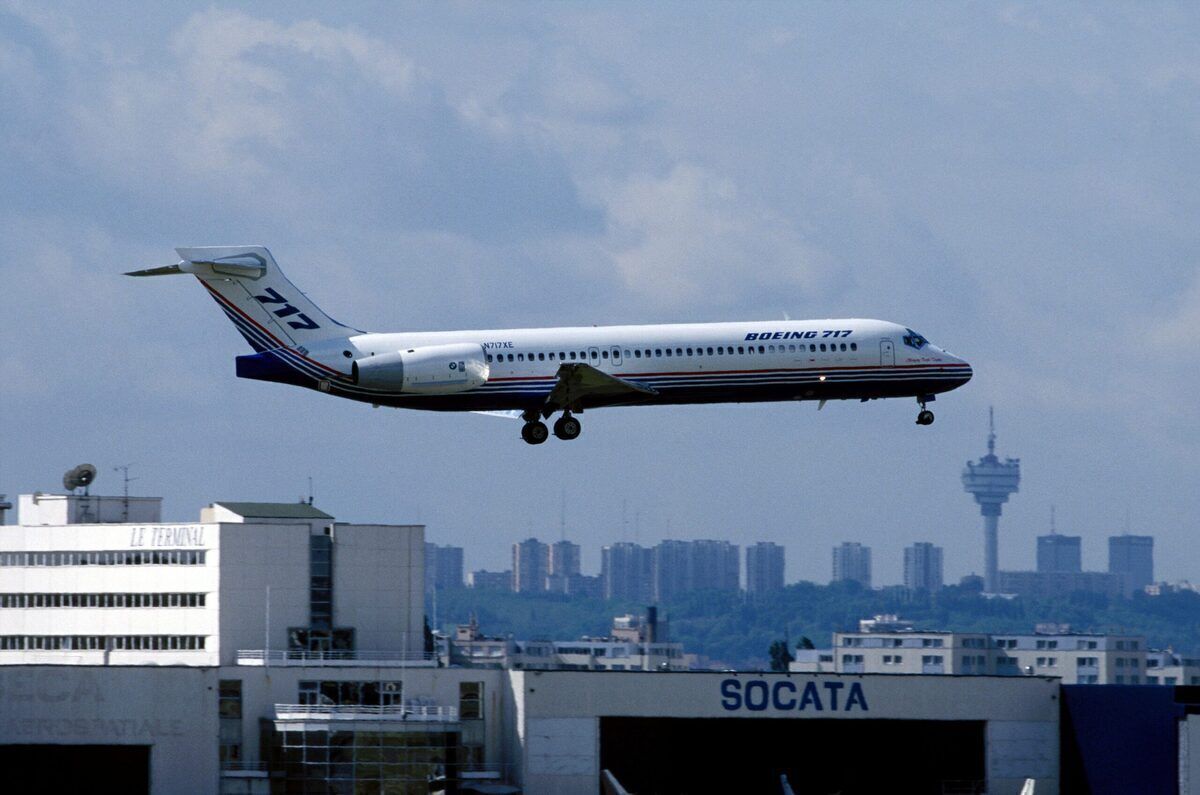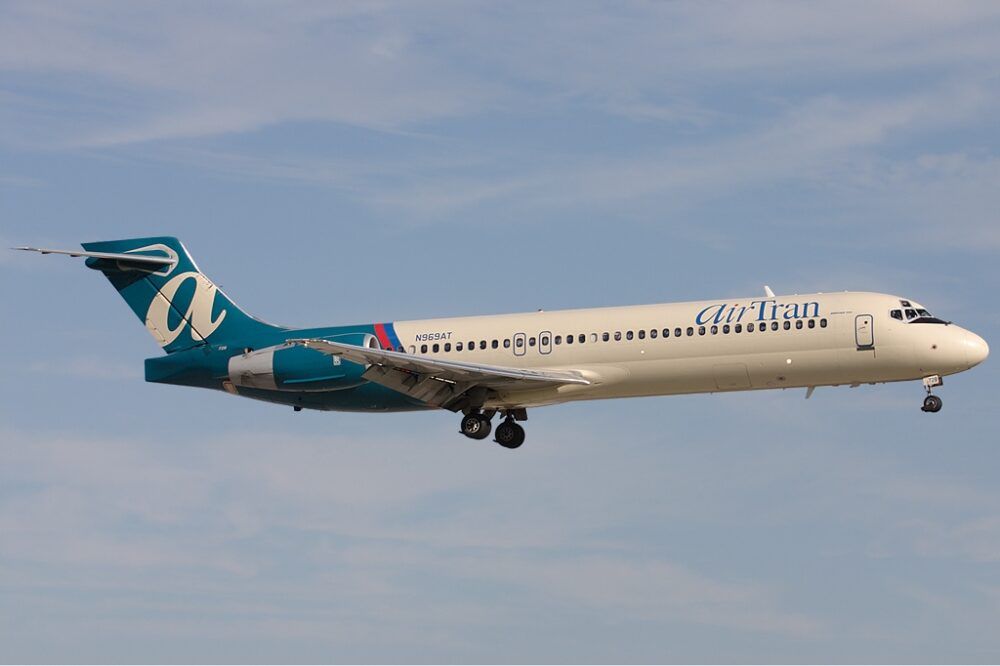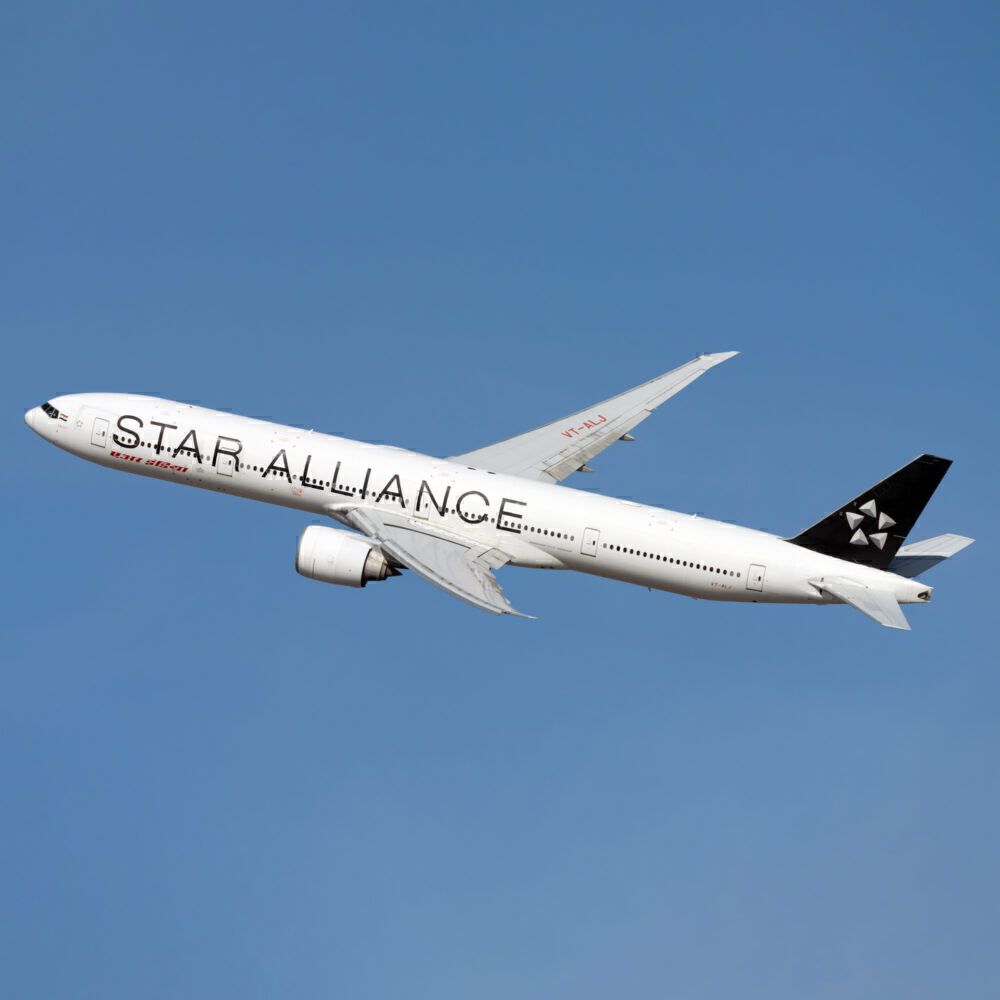When Boeing took over the MD-95 project in 1997, there were plans to stretch the fuselage of what was to become the Boeing 717-200 for a larger variant - the 717-300. However, despite interest from the type's launch customer, the stretched version of Boeing's inherited regional jet never made it farther than the drawing board. What happened?
The Boeing 717 was born out of the planemaker's merger with McDonnell Douglas in 1997. Originally conceived as the MD-95, a derivative of the DC-9 family, it received its first order in 1995 from ValuJet Airlines (later AirTran Airways). However, Boeing took over the program before it went into production.
Stay informed: Sign up for our daily and weekly aviation news digests.
One out of four other variants
The type finally took its first flight in 1998 entered service as the Boeing 717 one year later. After completing 156 of the aircraft, Boeing ceased production of its inherited narrowbody in 2006. The production variant of the 717-200 was designed for 134 passengers with a 2-3 seat configuration in economy class. However, the planemakers initially intended to make four other variants.
One was the 717-100, designed for only 86 passengers. This project was shelved in 2003. Even smaller was the 717-100X Lite, a proposed 75-seat version. Boeing also had intentions for a corporate variant of the 717-200, which would seat 40 to 80 passengers in first or business class. Unveiled in 2003, it was also designed to feature meeting rooms and workspaces. However, it never received any orders.
Then there was the proposed stretched version - the 717-300X, originally conceived as the MD-95-50. Initial plans were to extend the fuselage of the 717-200 about nine feet by adding nine frames - five forward and four aft of the wings. This would have increased passenger capacity to 145 in an all-economy set-up and 128 in a two-class configuration, as well as a higher MTOW.
The Star Alliance order than never was
Airlines that reportedly expressed interest in the 717-300 were the 717's launch customer AirTran Airways as well as members of the Star Alliance Group. In 2003, Air Canada, SAS, Lufthansa, and Austrian Airlines put forth a request for 100+ regional aircraft to Boeing, Airbus, Embraer, and Bombardier. Had Boeing won such an order, the fate of the 717 and the potential -300 could have looked very different.
Delta Air Lines, Iberia, and Northwest Airlines were also reported to be interested in the jet. However, it never made it past the drawing board and onto the assembly line. It is possible that Boeing was not overly enthusiastic about marketing the 717 program, which was a byproduct of the McDonnell Douglas merger.
However, as there were already 42 orders when the companies joined together, it could not justifiably cancel production. Boeing also received another 41 orders for the type just after the merger.
Somewhat of an orphan
Meanwhile, the 717 faced a little bit of a chicken-and-egg situation. It might have done a little better if the 717-200 had not been left somewhat of an orphan. Airlines might have been more inclined towards it within a family context. At the same time, Boeing was unwilling to put any more investment into it as it was not selling so well.
Boeing was, understandably, keener on marketing and producing its own narrowbody family of 737 jets. It was the best-selling jet in the world for five decades of its history, after all. Meanwhile, as the current situation stands, a 2-3 configured narrowbody for the 100-seater market to rival the Airbus A220 or the Embraer E190 family might not have been a bad item to have in the catalog.
How do you think a 717-300 would have fared? Leave a comment below and let us know.



